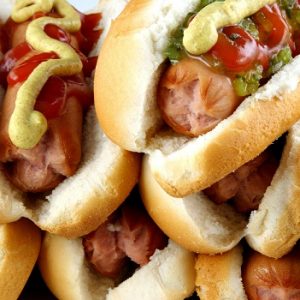
More evidence that low-calorie sweeteners are bad for your health
Studies show that artificial sweeteners can raise the risk of hypertension, metabolic syndrome, type 2 diabetes and heart disease, including stroke.

References
Appleton, B. S. & Campbell, T. C. Effect of high and low dietary protein on the dosing and postdosing periods of aflatoxin B1-induced hepatic preneoplastic lesion development in the rat. Cancer Res. 43, 2150-2154 (1983).
Appleton, B. S. & Campbell, T. C. Dietary protein intervention during the post-dosing phase of aflatoxin B1-induced hepatic preneoplastic lesion development. J. Natl. Cancer Inst. 70, 547-549 (1983).
Barnard, N. et al. A low-fat vegan diet elicits greater macronutrient changes, but is comparable in adherence and acceptability, compared with a more conventional diabetes diet among individuals with type 2 diabetes. J. Am. Diet. Assoc. 109, 263-272 (2009).
Campbell, T. C. & Campbell, T. M., II. The China Study, Startling Implications for Diet, Weight Loss, and Long-Term Health. (BenBella Books, Inc., 2005).
Campbell, T. C. Whole. Rethinking the science of nutrition (with H. Jacobson). (BenBella Books, 2013).
Esselstyn, C. B. J., Gendy, G., Doyle, J., Golubic, M. & Roizen, M. F. A way to reverse CAD? J Fam. Pract. 63, 356-364b (2014).
Schulsinger et al. (1989) Effect of Dietary Protein Quality on Development of Aflatoxin B1 -Induced Hepatic Preneoplastic Lesions. J. Natl. Cancer Institute 81: 1241-1245.
Tomasetti, C. & Vogelstein, B. Variation in cancer risk among tissues can be explained by the number of stem cell divisions. Science 347, 78-81 (2015).
Youngman, L. D. & Campbell, T. C. Inhibition of aflatoxin B1-induced gamma-glutamyl transpeptidase positive (GGT+) hepatic preneoplastic foci and tumors by low protein diets: evidence that altered GGT+ foci indicate neoplastic potential. Carcinogenesis 13, 1607-1613 (1992).

Please subscribe me to your newsletter mailing list. I have read the
privacy statement